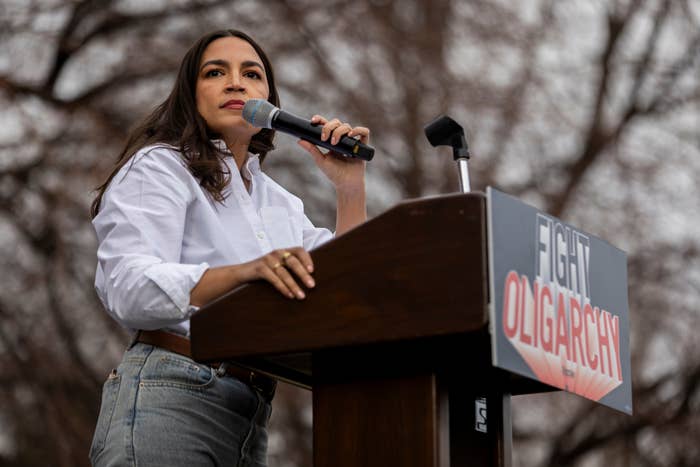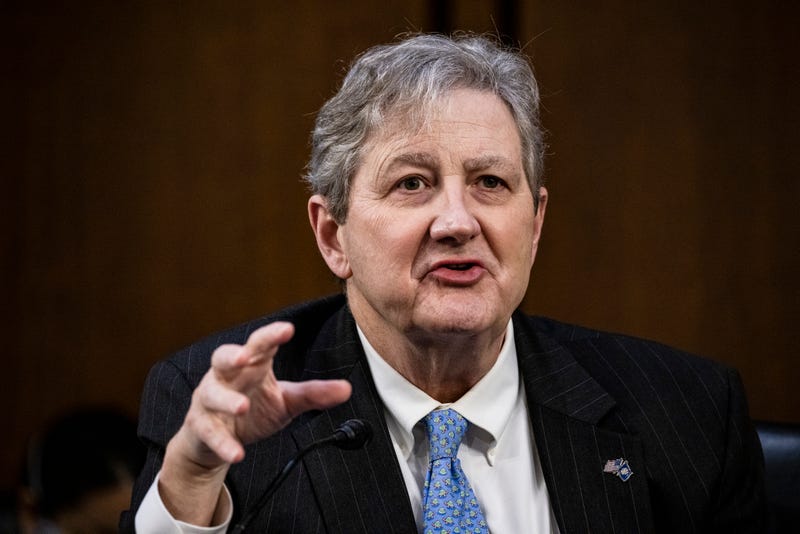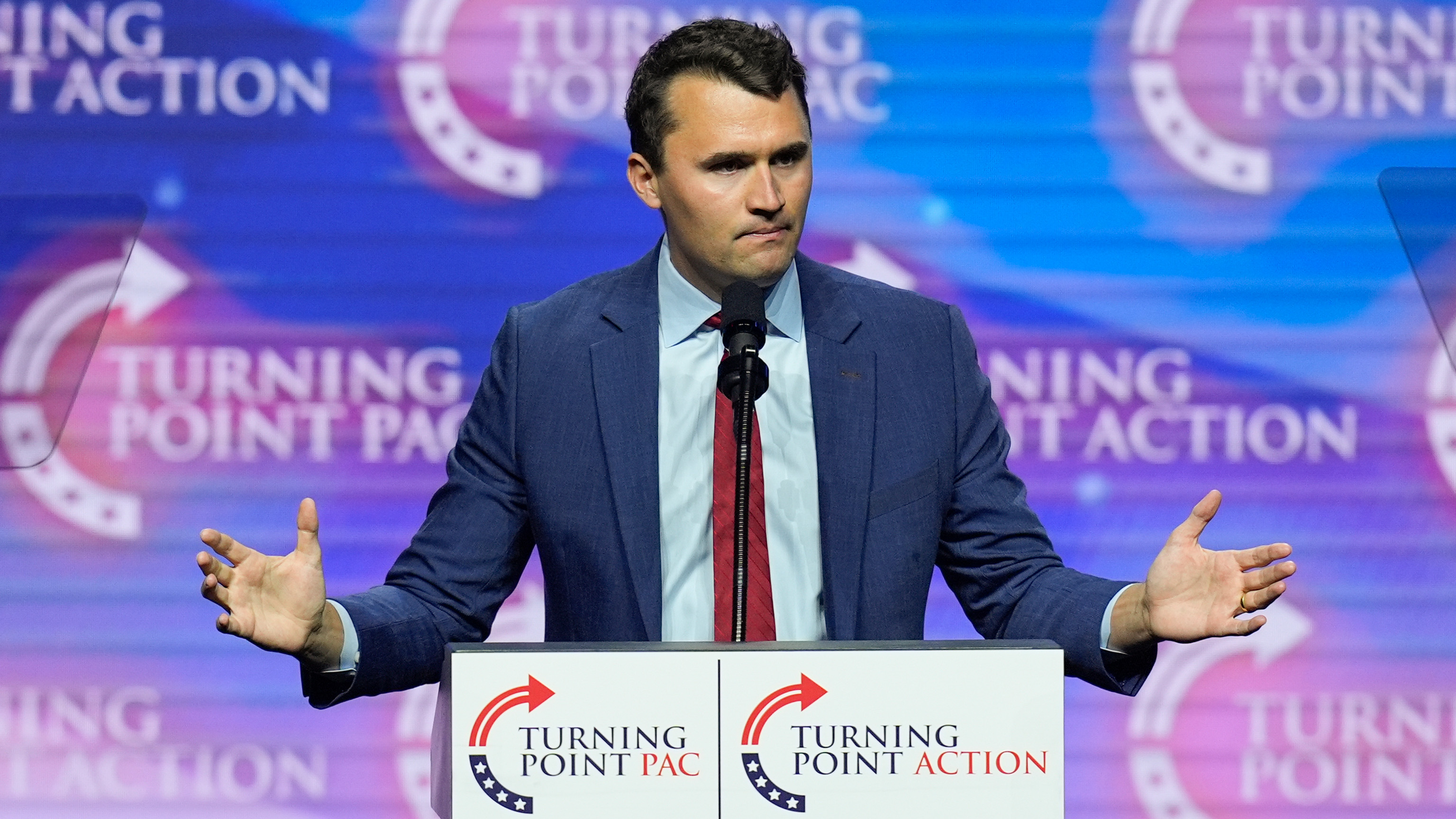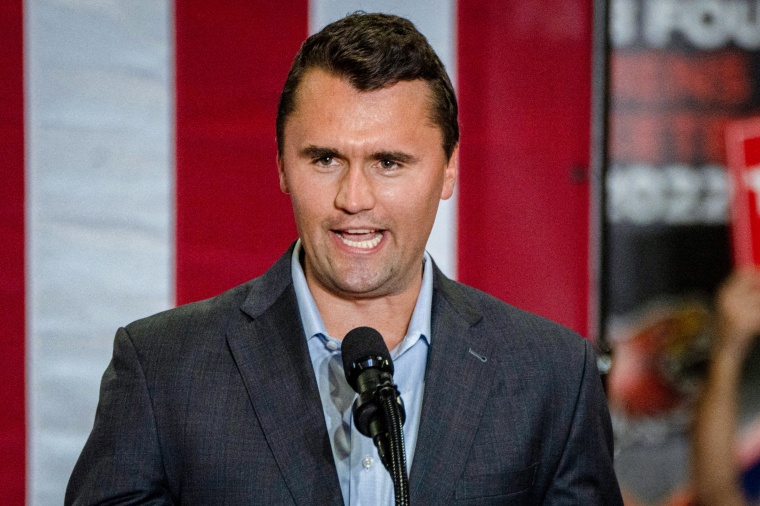AOC Said, ‘You Needs to Be Silenced’ — Sen. Kennedy Read the Whole Thread Out Loud When Alexandria Ocasio-Cortez tweeted that John Kennedy was “dangerous” and “needed to be silenced”
There are moments in politics that become instantly unforgettable — not because of shouting, scandal, or scripted drama, but because of silence, composure, and the sheer power of words.
That’s what happened the night Senator John Kennedy decided to respond to Representative Alexandria Ocasio-Cortez’s viral social media thread — not with anger, but with something far more disarming: clarity.
It was an exchange that started with a tweet, but ended with a national conversation about free speech, respect, and the state of political discourse in America.
1. The Tweet That Sparked a Fire
It began quietly — as most political storms do — with a post on X (formerly Twitter).
During a televised debate on education policy, Senator Kennedy made a remark about “protecting parental choice.”

Within minutes, Ocasio-Cortez fired back online. Her tweet read:
“John Kennedy’s rhetoric is dangerous. People like him need to be silenced before they normalize hate disguised as ‘freedom.’”
Those words, written late on a Tuesday night, spread like wildfire. Screenshots circulated faster than fact-checks. The hashtag
Cable panels debated it. Podcasts picked it apart. By morning, everyone wanted to know: would Senator Kennedy respond?
2. The Calm Before the Storm
Kennedy didn’t tweet back. He didn’t issue a press statement or go on a rant.
For three full days, he said nothing.
Reporters hounded his aides, waiting for an angry rebuttal or a sarcastic comeback. None came. Instead, the Senator kept his schedule — quiet, polite, and focused on policy hearings.
Behind the scenes, however, something was brewing.
According to a senior staffer, Kennedy had already decided how he would respond — not online, not in private, but in public. And he wanted to do it in a way that no one could twist or misinterpret.
“He told us, ‘I’m not going to fight her on Twitter. I’ll let her words speak for themselves,’” the staffer later recalled.
3. The Stage Is Set
The opportunity came a week later. Kennedy was invited to participate in a televised policy forum hosted by the American Civic Council — a nonpartisan event where lawmakers discuss political transparency and media accountability.
Midway through the broadcast, Kennedy requested a few minutes to address what he called “a matter of public dialogue.”

The moderator agreed. Cameras zoomed in. The room fell silent.
Kennedy reached into his jacket, pulled out a folded piece of paper, and began to read.
4. “I’m Just Going to Read It — Word for Word”
What followed was both unexpected and unforgettable.
In a slow, deliberate voice, Kennedy began reading Ocasio-Cortez’s entire tweet thread — word for word. No interruptions. No commentary. Just her words, projected across the room and broadcast live nationwide.
At first, the audience didn’t understand what was happening. Then the tone shifted.
“People like him need to be silenced.”
“Freedom of speech doesn’t protect dangerous misinformation.”
“When elected officials weaponize ‘opinions,’ they should face consequences.”
He read every sentence, pausing slightly between each line. His expression remained neutral. The silence in the room grew heavier with each word.
When he finished, Kennedy looked up, folded the paper again, and said simply:
“Ladies and gentlemen, those are her words — not mine. I believe the American people can decide for themselves what’s dangerous and what’s free.”
5. A Rare Moment of Stillness
The room was utterly still.
For nearly ten seconds, no one moved. Then came a wave of low murmurs, followed by applause — hesitant at first, then louder, then thunderous.

Even the moderator appeared caught off guard.
It wasn’t a confrontation. It wasn’t a victory lap. It was a quiet, calculated act of defiance — one that said more than any rebuttal could.
6. The Clip That Went Viral
Within hours, the clip of Kennedy reading the tweets exploded online. It was viewed over 50 million times in 24 hours.
Commentators from across the political spectrum weighed in.
-
Some praised Kennedy for his restraint, calling it “the perfect response to online outrage culture.”
-
Others accused him of “performative politics.”
-
A few suggested both sides were “playing into a spectacle” that distracted from real policy debates.
Still, one thing was clear: Kennedy had reframed the conversation. Instead of reacting emotionally, he forced the public to confront the words themselves — stripped of hashtags and context.
7. The Media Reaction
News outlets scrambled to interpret the moment.
On morning television, panelists replayed the clip frame by frame. Some noticed Kennedy’s calm tone; others focused on the crowd’s reaction.
Editorials ran headlines like:
-
“The Power of Silence: Kennedy’s Genius Response to Online Outrage.”
-
“Did AOC Go Too Far?”
-
“The Thread That Backfired.”
Ocasio-Cortez’s office declined to comment, but a statement posted later that evening read:
“We should all strive to create safer spaces for public dialogue. But those in power must also take responsibility for the harm caused by their words.”
It was a careful, measured response — though it didn’t mention Kennedy by name.
8. The Expert Breakdown
Communication analysts were quick to dissect the exchange.

Dr. Marla Benton, a professor of political communication at Georgetown University, said:
“What Kennedy did was a textbook example of narrative reversal. By refusing to defend himself, he shifted the burden of interpretation entirely onto his opponent’s language.”
She added:
“This is an old rhetorical trick — but executed with modern precision. In an age where people skim headlines and react emotionally, forcing them to listen changes the power dynamic.”
Political historian Andrew Willis agreed, noting that the event may become a case study in the politics of restraint.
“It’s rare for a modern politician to weaponize calmness,” he said. “Kennedy reminded America that composure can be more powerful than outrage.”
9. The Online Divide
Meanwhile, social media platforms became a battleground.
Supporters of both figures clashed in endless threads and comment sections.
Some users applauded Kennedy’s approach:
“He didn’t insult her. He didn’t twist her words. He just read them. That’s real accountability.”
Others defended Ocasio-Cortez:
“She’s right about the dangers of misinformation. Kennedy took her words out of emotional context.”
Amid the digital noise, a few voices called for empathy — reminding people that online disputes often lose their nuance when transformed into viral soundbites.
10. Behind the Scenes: How It Came Together
According to an aide close to Kennedy, the decision to read the thread aloud was not spontaneous.
“He planned it for days,” the aide revealed. “He knew it would draw attention, but he didn’t want to attack her personally. He wanted to remind people that freedom of speech includes the right to disagree — even strongly.”
Kennedy reportedly practiced the reading several times beforehand to ensure his tone remained neutral. “Not angry. Not sarcastic,” he said. “Just factual.”
The team rehearsed in a small office the night before the broadcast.
“He told us, ‘This isn’t about me winning. It’s about showing how words can lose their meaning when they leave the internet.’”
11. The Aftermath: Congress Reacts
The next day, lawmakers from both parties commented on the viral moment.
Senator Tim Scott praised Kennedy’s composure, calling it “an example of how leaders should respond to criticism.”
Representative Ilhan Omar, however, defended Ocasio-Cortez, saying the tweet had been “taken out of its emotional and historical context.”
Still, even among political rivals, there was a quiet recognition that something unusual — maybe even healthy — had happened.
A senior Democrat, speaking anonymously, admitted:
“I don’t agree with Kennedy often, but that was a masterclass in tone. It reminded us all to slow down before we tweet.”
12. Public Opinion Shifts
A poll conducted two days after the incident showed that 64% of respondents admired Kennedy’s calm response, while 21% viewed it as “manipulative political theater.”
Interestingly, nearly half of self-identified independents said they “respected both sides for expressing conviction.”
Political analysts called it a rare example of bipartisan reflection — a moment where two ideological opposites reminded Americans that disagreement, when handled with restraint, can actually elevate the conversation.
13. The Lessons in Leadership
Leadership expert Dr. Raymond Cole wrote an op-ed analyzing the deeper meaning behind Kennedy’s decision.
“In politics, silence is often mistaken for weakness,” Cole wrote. “But true leadership requires knowing when to speak and when to let others’ words speak for themselves.”
He argued that Kennedy’s act wasn’t about winning an argument — it was about modeling emotional intelligence.

“His choice reminded millions that you don’t always have to shout to be heard.”
14. AOC’s Quiet Reflection
Weeks later, during a podcast interview, Ocasio-Cortez was asked about the viral thread. She didn’t apologize, but her tone was reflective.
“I’ve learned that sometimes our passion for justice can come across as hostility,” she said. “I stand by my principles, but I also understand how words can take on a life of their own once they’re out there.”
It was one of her more introspective moments — a rare admission of the emotional toll of modern politics.
15. The Broader Impact
In classrooms, communication workshops, and leadership seminars across the country, the Kennedy-AOC exchange began to be cited as a turning point in the era of “digital politics.”
Professors showed the clip to students studying rhetoric and online behavior. Journalists wrote think pieces about how both figures had exposed the dangers of reaction-driven discourse.
“We’re witnessing a shift,” said Dr. Benton. “This wasn’t about left or right. It was about tone, truth, and how we respond when we’re called dangerous.”
16. The Irony of It All
Ironically, Kennedy’s calm reading made Ocasio-Cortez’s original words reach an even larger audience than she could have imagined.
The more he read, the more people went online to see the original thread, sparking renewed debate about censorship, speech, and accountability.
It became a meta-conversation — not just about what was said, but how we interpret what’s said.
17. A Moment Frozen in Time
The viral clip has since become part of America’s political memory.
In it, you see Kennedy standing before the audience, paper in hand, voice steady. You see the faces of people listening — confused at first, then thoughtful.
You realize that, for a brief moment, politics paused. There was no shouting, no cross-talk, no trending hashtag. Just silence.
And in that silence, people heard something deeper — not about parties or power, but about the value of restraint.
18. What It Means Now
Months later, the shockwaves of that night still ripple through Washington.
Analysts describe it as “the calm confrontation that changed the tone.”
Political strategists study it. Commentators replay it. But to Kennedy, it was never about theatrics.
“I just wanted people to think,” he said quietly in a later interview. “That’s all.”
And maybe, in a world driven by outrage, that simple goal is revolutionary.
19. Conclusion: Beyond Politics
At its core, the Kennedy–Ocasio-Cortez exchange wasn’t just about ideology — it was about communication. It was a reminder that the digital world, with all its instant reactions and polarizing algorithms, often forgets one crucial thing: human tone.
Kennedy read those tweets not to embarrass or belittle, but to expose how dehumanizing political speech can sound when read out loud.
And in doing so, he gave the country something rare — a shared moment of reflection.
20. The Final Word
As one commentator put it on air the next morning:
“For once, it wasn’t about who won. It was about who listened.”
Perhaps that’s the real message hidden in Kennedy’s simple act — that in an era of endless noise, the loudest statement a leader can make…
is to read, pause, and say nothing at all.
The Final Farewell of Charlie Kirk: Chaos, Love, and a Silent Battle Against Death in the Hospital Emergency Room. Charlie Kirk’s final hours in the hospital emergency room were a moment of both chaos and heartbreak.D

The emergency room was unusually tense that evening. Fluorescent lights flickered faintly over the sterile white walls, echoing off the linoleum floor, and the faint beeping of monitors seemed almost louder than usual.
Doctors moved in brisk, precise motions, yet behind their composed faces, a quiet panic simmered. Charlie Kirk had been rushed in after a sudden collapse, and from the very moment he arrived, the scene became a battle against time, a confrontation with mortality that none of the staff would ever forget.
Nurses whispered in hurried tones, their hands shaking slightly as they prepared equipment. The air was thick with antiseptic, fear, and the raw intensity of life hanging by a fragile thread. Even the most experienced physicians felt a rare helplessness. Outside the room, family members waited anxiously, unaware of the chaos unfolding within, while inside, every second counted.
Charlie’s wife, Erika, arrived moments later, her face pale but determined. Her eyes scanned the room frantically, taking in the sight of medical staff working tirelessly.

She grasped his hand gently, feeling the coldness of his skin, and whispered words of love and reassurance, though the gravity of the situation was unmistakable. The hospital, usually a place of routine procedure, had transformed into a theater of emotion, suspense, and silent desperation.
For Charlie, every breath became a struggle. His body fought against forces unseen, a silent battle that would ultimately define the last chapter of his life. Doctors adjusted monitors, administered medication, and monitored vital signs with meticulous care, all the while aware that the margin between life and death had never been thinner. Nurses moved with precision and quiet reverence, the chaos in the room giving way to moments of stunned silence when Charlie’s vitals fluctuated alarmingly.
The hours stretched like an eternity. Outside, news spread that Charlie Kirk, the political figure known for his outspoken views and fiery speeches, had fallen critically ill. Social media buzzed with speculation, concern, and shock.
Fans and critics alike debated what had happened, but no amount of online chatter could capture the intensity, the drama, or the sheer human fragility that unfolded within the hospital walls.
Erika remained by his side, her presence both a source of comfort and a painful reminder of the stakes. She held his hand, whispered prayers, and stroked his hair gently, unwilling to leave even for a moment.

The staff, recognizing the emotional weight of the moment, moved around her carefully, balancing the demands of medical intervention with respect for the human element of final goodbyes.
As minutes passed, Charlie’s condition became more precarious. Each labored breath, each faint pulse, was a reminder of the thin line separating life from death. Doctors communicated in clipped tones, coordinating interventions, but even the most precise procedures could not mask the reality of mortality. The room was simultaneously a place of science and a stage of raw human emotion.
Witnesses later recalled the haunting quiet that settled intermittently. At times, even the incessant beeping of monitors seemed to fade, leaving only the sound of shallow breaths and whispered words.
The sterile environment of the emergency room became a vessel for grief, love, and the stark awareness of human fragility. In these moments, time felt suspended, and every gesture, every glance, carried the weight of significance.
Erika’s whispered words grew more urgent, more tender. She reminded Charlie of shared memories, of laughter, of triumphs, and of the enduring bond that had sustained them through years of public scrutiny and personal trials.

Her voice, fragile yet resolute, carried both hope and the inevitability of loss. In that room, love became a palpable force, almost as critical as the medical interventions that surrounded them.
The medical team worked tirelessly, alternating between moments of intense action and calculated observation. Fluids were administered, oxygen adjusted, medications delivered with precision, all in a desperate attempt to stabilize a body that seemed determined to slip away.
Every heartbeat registered on the monitors became a small victory, every falter a reminder of fragility. The room was alive with tension, drama, and the quiet dignity of a battle being fought on the front lines of life itself.
Hours turned into what felt like a lifetime. Visitors, friends, and colleagues were kept at bay, but word of the unfolding drama leaked through hospital corridors. People outside speculated, journalists began to circulate preliminary reports, and the story of Charlie Kirk’s final moments began to take on a life of its own. Yet nothing could capture the full measure of human emotion, the interplay of hope, fear, and love that defined the room where he lay.
At a pivotal moment, Charlie’s vitals wavered dangerously. Nurses exchanged anxious glances; doctors accelerated interventions. Erika’s hand tightened around his, her tears falling silently. She whispered a final, heart-wrenching goodbye.
In that single act, the profound humanity of the moment became undeniable — the world outside, with its politics, debates, and controversies, faded into irrelevance. All that remained was love, courage, and the fleeting, fragile essence of life.
As night deepened, memories of Charlie’s life seemed to converge in the room. The staff recalled his public speeches, his fiery personality, and the countless times he had inspired supporters and infuriated opponents.

But in these final hours, none of that mattered. All that mattered was the human being before them, vulnerable and mortal, surrounded by people who cared. Each heartbeat, each breath, was a testament to the delicate balance of existence.
Erika continued to speak softly, recounting anecdotes, shared jokes, and moments of triumph and tenderness. Every word, every touch, seemed to draw strength into Charlie, even as his body weakened. The medical team respected these interactions, allowing the human connection to coexist with the clinical urgency of saving a life.
Then came the moment everyone had feared. Charlie’s pulse weakened further. Alarms sounded briefly, then fell silent. Doctors and nurses acted instinctively, adjusting medications, administering interventions, and calling out vital signs.
Erika’s voice trembled as she whispered prayers and words of love, refusing to let go. For a few fleeting minutes, the entire room was suspended between hope and despair, life and death.
In those minutes, the concept of time became irrelevant. Seconds stretched into eternities. The usual hum of hospital activity faded, leaving only the fragile rhythm of human breath and the faint, relentless hope of those who refused to surrender.
Charlie’s final moments were a mixture of pain, courage, and extraordinary love — a testament to the human spirit and the depth of emotional bonds that define our existence.

When it was over, silence filled the room. The monitors flatlined. Erika rested her head on Charlie’s chest, tears streaming freely, mourning and honoring the man she loved.
The medical staff, exhausted and emotionally drained, exchanged glances of solemn understanding. They had witnessed not just the end of a life, but a deeply human moment of connection, courage, and vulnerability.
Outside, news of Charlie’s passing spread rapidly. Social media lit up with reactions, tributes, and shock. Yet for those who had been in the emergency room, the story was far more than headlines or public opinion. It was about the fragile beauty of life, the quiet power of love, and the emotional reality of facing mortality with dignity and grace.
Charlie Kirk’s final hours were a reminder that no matter one’s public persona, achievements, or controversies, life ultimately boils down to human connection, love, and the fleeting moments that define us.
The chaos of the emergency room, the silent battle against death, and the tender exchanges of love and farewell illustrated the profound and universal truths of human existence.
Even after his passing, the impact of those hours continued to resonate. Nurses recalled the stillness, the fragile hope, and the profound humanity displayed. Erika remembered every word, every touch, every fleeting glance. The emergency room became a silent witness to the extraordinary resilience of love, even in the face of inevitable loss.
Charlie Kirk’s story ended not in politics, controversy, or public acclaim. It ended in the quiet, dramatic, and deeply human theater of a hospital room, where love, courage, and fragility intertwined to create a moment that would never be forgotten by those who were present. His final farewell stands as a testament to the enduring power of human connection, even in the face of death, and the fragile yet extraordinary beauty of life itself.





